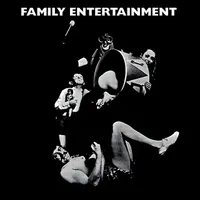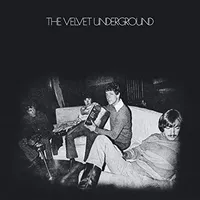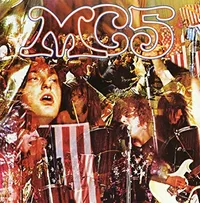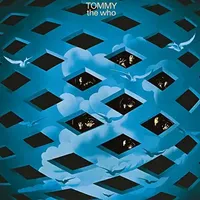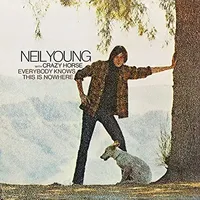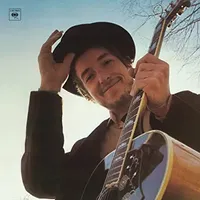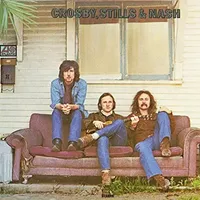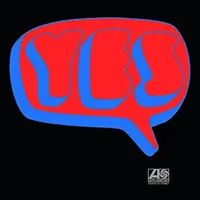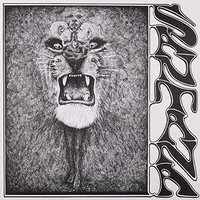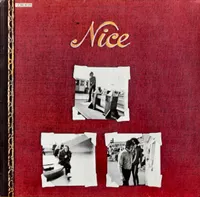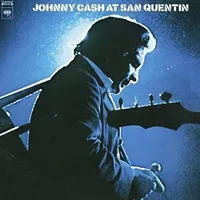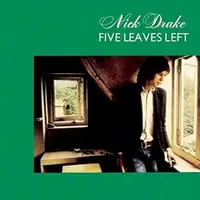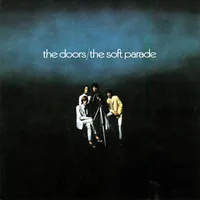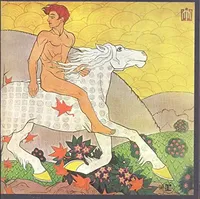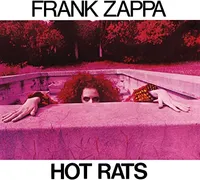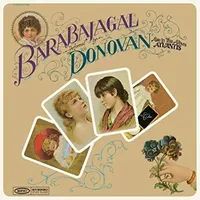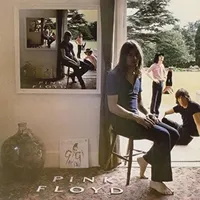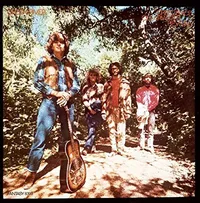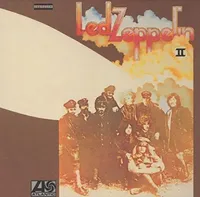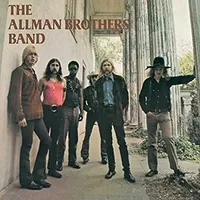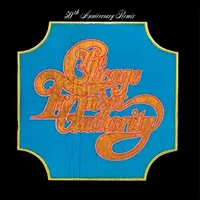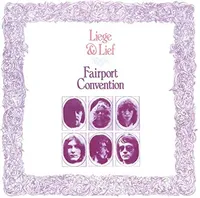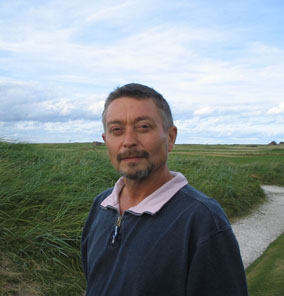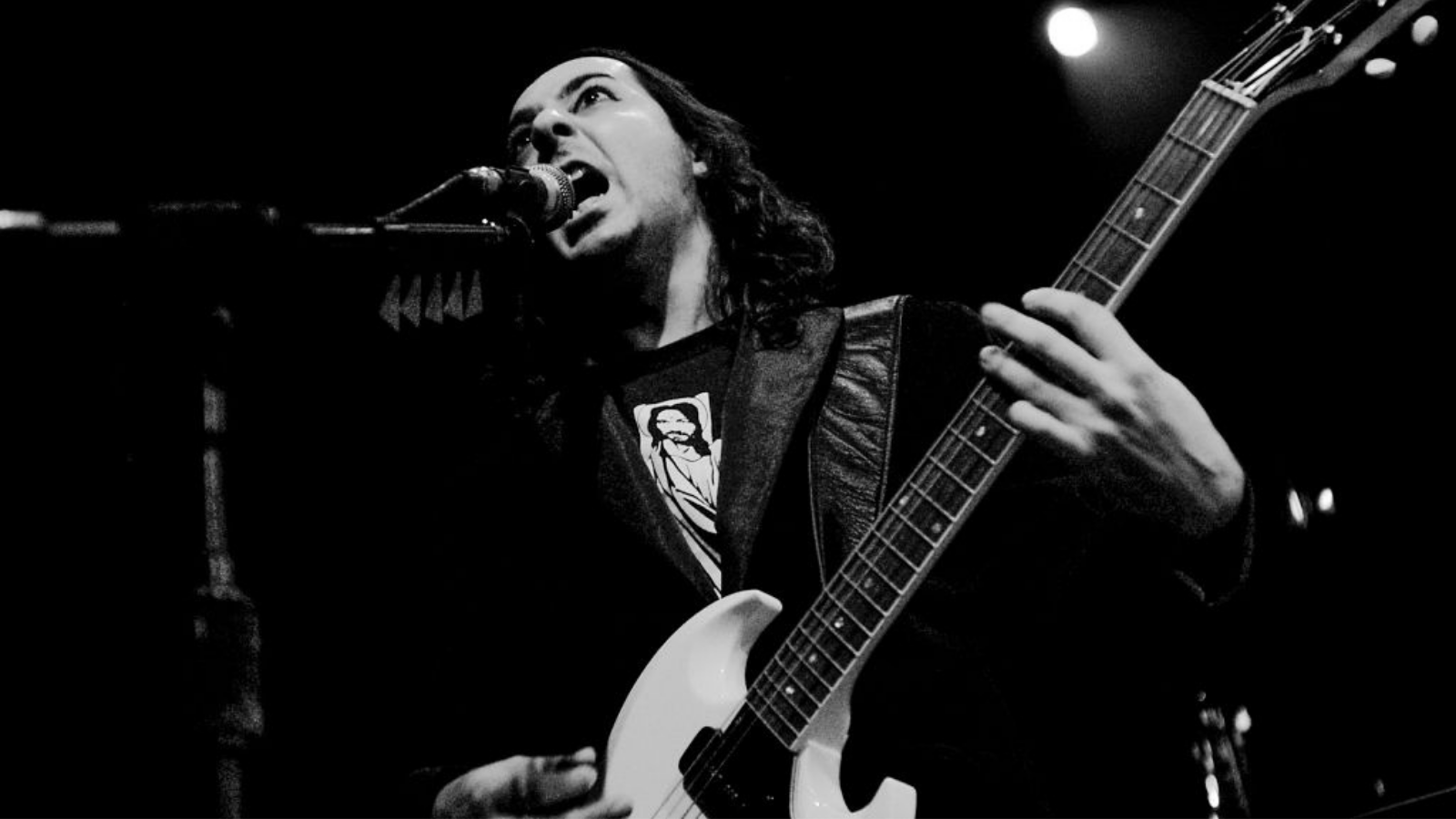The 40 best albums of 1969, the year rock got real
1969 heralded the end of the 60s and the birth of real rock. Here we look at some of the gilt-edged albums from a pivotal year in rock history

With the benefit of more than 50 years of hindsight, it’s pretty obvious that there hasn’t been too many years like 1969. That one 12 month period saw the release of debut albums from bands as different and as important as Led Zeppelin, The Stooges, Yes, The Allman Brothers, King Crimson, Free and Mott The Hoople seems incredible today.
1969 wasn’t the year that rock was born but it was certainly the year that it grew up; the year of Woodstock and Altamont; the year of The Beatles’ last album proper; and the year that a confluence of technology, experience and ambition led to the creation of some of rock’s most defining works.
Below, we celebrate some of the key albums of that extraordinary year.

January
Multi-platinum from the outset, Led Zeppelin redefined the parameters of heavy rock with an awesome debut, produced by Jimmy Page and manager Peter Grant.
Explosive time signatures and crazed blues characterise You Shook Me and the career-defining Dazed And Confused, but Robert Plant’s elegiac side comes to the fore on the acoustic Babe I’m Gonna Leave You and Black Mountain Side, with help from Sandy Denny and Viram Jasani. Welcome to a new metal world, one whose ambition and power remains a template to this day.
February
After the praises heaped upon Music From A Doll’s House, their eclectic debut, there were fears that psychedelic progressive rockers Family might have peaked too soon. Unphased, they simply played to their strengths – singer Roger Chapman’s deranged vibrato vocals, guitarist John Whitney’s fluid guitar, Jim King’s concise saxophone and Ric Grech’s agile bass and wafting violin.
The taut, explosive The Weaver’s Answer is Family’s crowning creation. The dreamier Observations From A Hill, the lively Hung Up Down and the grand Emotions are the other gems decorating a very fine album.
March
Cream had said their farewells five months earlier and this album looked like a cynical cash-in, with a cover shot of the trio decked out in cheap satin top hats and tails, while inside the song titles were written on tombstones. Goodbye packs live and studio tracks into one album, highlighting the schizophrenia at the heart of Cream.
They each have a studio track, and Eric Clapton brings in George Harrison to supply the bridge (and, inadvertently, the title) for Badge. Elsewhere, the thumping live version of I’m So Glad is nascent grunge.
Genesis - From Genesis To Revelation
Genesis never forgave Jonathan King for mixing all the potency out of their charming, elegant, if sometimes rather contrived, songs on their debut album. And the pre-Spinal Tap black cover with just the title in gold letters saw it frequently filed in the ‘religious’ section of unwitting record shops.
The rough mix of In The Wilderness on Genesis Archives 1967-75 is closer to the sound the band intended, as are several of the demos. Despite the album’s ignominious failure the band gained enough confidence in their songs to persevere.
Formed in San Francisco, (although ex-Jefferson Airplane/Quicksilver Messenger Service drummer Skip Spence was Canadian), Moby Grape were in permanent flux, unable to locate an audience for their audacious combination of garage rock and peculiar songwriting, exemplified by If You Can’t Learn From My Mistakes.
Spence left them with Seeing before making his own cosmic masterpiece, Oar, and the trio soldiered on to produce Truly Fine Citizen before bassist Bob Mosley also left. Prophets without honour, the Grape are highly rated now. Hurrah!
April
The Velvet Underground - The Velvet Underground
After the band were dropped by MGM Records then signed to Atlantic, the Velvets’ third album was recorded with Doug Yule replacing John Cale who left to produce Nico’s Marble Index and the Stooges, leaving Lou Reed in sole charge.
Stripped of white noise and feedback, The Velvet Underground was recorded in LA but avoids any hippie associations; Jesus is gorgeously ironic, while Beginning To See The Light and What Goes On are full-tilt rock. An album that’s timeless in conception. And just as well, since it was virtually ignored on release.
May
No other album reflects the revolutionary fervour crackling across the globe in ’69 like The MC5's Kick Out The Jams. From White Panther Party founder John Sinclair haranguing the audience to choose between lethargy and direct action, to Motor City’s Burning reporting exactly what was going on in the petrol-bombed streets of Detroit, …Jams walks it like the Stones’ Jumping Jack Flash couldn’t even talk it.
Leaving politics aside, the incendiary interplay between the two guitarists, Fred ‘Sonic’ Smith and Wayne Kramer, on Rocket Reducer No. 62 (Rama Lama Fa Fa Fa) is hyper-rock insurgency incarnate.
This two-million-selling double album album, Pete Townshend’s ambitious rock opera, finally broke The Who in America. If you can overlook the concept, Tommy contains great standalone songs like Pinball Wizard, I’m Free and Keith Moon’s uniquely pervy contributions, which reveal a non-PC side to the era that bands wouldn’t dream of attempting today.
Made with Townshend’s vision, Roger Daltrey’s mic-twirling energy and the loosest rhythm section in rock history, Tommy also had ambitious artwork (a triptych fold-out sleeve). Tommy also later became a decent movie directed by Ken Russell and starring Daltrey, Jack Nicholson, Elton John and Tina Turner.
Neil Young - Everybody Knows This Is Nowhere
Properly credited to Neil Young & Crazy Horse, this, the former Buffalo Springfield man Young’s second album, was recorded in a few weeks while he was recovering from flu. Maybe it was a fever that inspired him to write the majestic Cinnamon Girl, Cowgirl In The Sand and Down By The River, daubed with lengthy guitar jams that became a Young trademark.
Equally arresting is Running Dry, while the unity of the playing has a great energy. Having toured the album Young, joined forces with CS&N. The rest is history.
Full of Bob Dylan’s weird, country crooner drawl (the result of his motorcycle prang, it was thought), this album did what it said on the tin.
With various Area Code 615 alumni in tow, Dylan headed for Tennessee and found bliss in the shape of Girl From The North Country – a sublime duet with Johnny Cash – the light-as-a-feather Peggy Day and the unusually tender Tonight I’ll Be Staying Here With You. The album rather shocked Dylan’s fan club but it still went on to sell a coupla million.
Moody Blues - On The Threshold Of A Dream
Leaving their R&B image behind, The Moodies’ Mellotron-soaked fourth album was No.1 in the UK and spent a long time in the US chart. It’s a cracker, pretentious as hell with its spoken-word interludes, like Descartes’s maxim ‘I think, therefore I am’.
Nothing sums up the ‘yeah, man’ atmosphere better than Dear Diary and Justin Hayward’s gorgeous Send Me No Wine. An album that was adored then, derided later, rehabilitated today.
Quicksilver Messenger Service - Happy Trails
QMS achieved more notoriety for staging gunfights with The Grateful Dead over their adjoining ranches than they did for record sales. But these Berkeley cowboys were dynamite live. And here’s the proof.
On vinyl the first side is a sprawling, danger-packed workout on Bo Diddley’s Who Do You Love, recorded at the Fillmore Theatre, showcasing the most dazzling guitar interplay ever between Gary Duncan and John Cippolina. Side two has another live blitzkrieg: Mona, plus the atmospheric Calvary and Maiden Of The Cancer Moon.
June
Captain Beefheart - Trout Mask Replica
Having stirred up the scene with his radical Safe As Milk and the controversial Strictly Personal albums, Captain Beefheart went for broke on Trout Mask Replica, produced by his childhood friend and nemesis Frank Zappa.
Over its 28 tracks the Captain subverts every convention of rock’n’roll, starting with the basic four-piece line-up on the tangled Frownland. The album could have been written for John Peel, who played it constantly, making Beefheart an underground hero in Britain. That didn’t make him rich but it did make him hugely influential.
Crosby, Stills & Nash - Crosby, Stills & Nash
With former members of The Byrds, Buffalo Springfield and The Hollies, CS&N were ’69’s supergroup sensation. Majoring in hippie anthems and blue-jean philosophy, they symbolised a belief that the world would be changed by harmony.
Winning the Grammy for Best New Artist, thanks to their acoustic revolt against hard rock, they had peachy tunes like Marrakesh Express and Guinnevere, fleshed out by Stills’s guitar attack and the protest anthem Wooden Ships, capturing the year in a glossy nutshell while laying down the standard for Californian soft rock forever.
Southend’s finest boasted their classic line-up for the last time on this, their third album, with keyboard player Matthew Fisher taking on production on a set of nautical Essex shanties, garnished with tasty morsels like The Devil Came From Kansas and the classic Crucifiction Lane.
Musically adventurous, with sound effects and orchestrations, it gave Procol Harum their first UK chart entry.
July
Growing out of their hippie roots, Spirit readied themselves for the 70s, taking a more collective approach on this, their third album. The benefits are, er, clear on the opener, the energetic, hook-laden rocker Dark-Eyed Woman with its great bass line, Randy California’s searing guitar solo and sound effects (pinched by Traffic for Shoot Out At The Fantasy Factory).
Elsewhere there’s the stoned, bluesy Apple Orchard, the fine harmonies of So Little Time To Fly (pinched by Status Quo as Time To Fly) and the exuberantly funky Ground Hog.
Ambitious’, ‘inventive’ and ‘fresh’ was the critical consensus on both sides of the Atlantic to Yes’s debut album. In truth it was a range-finder as Yes developed their style. The core elements are already there on songs like Survival, Looking Around and Yesterday & Today: the springy, jazzy rhythm section; Steve Howe’s deftly controlled guitar sounds on electric and acoustic; Jon Anderson’s head-in-the-clouds voice and lyrics.
Melodically they lacked a little, compensating with Vanilla Fudge-style covers of The Beatles’ Every Little Thing and The Byrds’ I See You.
August
Cream fans anticipated some heavyweight fireworks from this supergroup in which Eric Clapton and Ginger Baker teamed up with Traffic’s Steve Winwood. The band, however, were looking for something rootsier, more akin to The Band’s Music From The Big Pink. Only the opening, weighty Had To Cry Today matched those fans’ expectations, although Sea Of Joy had its moments.
The subtler pleasures of Can’t Find My Way Home and Clapton’s elegant Presence Of The Lord (on which Winwood shone on vocals) had other musicians drooling but took longer for others to appreciate. By which time Blind Faith had gone, victims of a hype they couldn’t control.
Book-ending the year with smash hit singles Living In The Past and The Witch’s Promise, Jethro Tull epitomised 1969’s underground alternative. With charismatic frontman/ flautist Ian Anderson and guitar master Martin Barre, on Stand Up they wowed the hippie hordes with renditions of JS Bach’s Bourée and comic social songs like Jeffrey Goes To Leicester Square (sort of posh Kinks) and the trippy Look Into The Sun.
Motley garb aside, Anderson was a lippy media manipulator. The album came in a thick cardboard fold-out, inside which the band, er, stood up.
Riding the second wave of San Francisco bands, the multi-racial melting pot that was Santana fused Latin, African, jazz, blues, funk and rock into a pulsating musical torrent powered by two percussionists and a drummer while guitarist Carlos Santana and keyboard player Greg Rolie flew above.
Manager Bill Graham got them to shoehorn their elongated jams into something approaching a song. A show-stopping appearance at Woodstock left half a million punters salivating for this, their debut album. A hit single with Evil Ways was an unexpected bonus.
With uncharacteristic efficiency, the Stooges blagged $25K from Elektra, roped in John Cale to produce and knocked out their so-raw-it’s-bleeding debut in four days. It’s pretty much their live set – plus extras rush-written to fill the tracklist – and almost as thrilling on seedy standouts like I Wanna Be Your Dog. Needless to say, it tanked.
And what was the real effect of their debut besides influencing at least five generation of musicians, and providing a handbook for legions of disaffected outsiders? “I think our greatest influence was we put an end to the 60s,” Iggy Pop said in 1977.
The Nice had already spent two years building their grandiose classical/pop reputation, reconstructing Leonard Bernstein’s West Side Story classic America and turning Dave Brubeck’s Blue Rondo A La Turk into Rondo, and this third album was their first to chart.
On vinyl, side one features Keith Emerson’s classical/jazz reworking of Tim Hardin’s Hang On Two A Dream and three psychedelic/progressive tracks. Side two is a live recording from New York’s Fillmore East that includes Rondo given a good thrashing and a 12-minute reworking of Bob Dylan’s She Belongs To Me.
Country music’s redneck reputation did not endear it to the 60s generation, but Johnny Cash was the rebellious exception. A far cry from the big hats and big hair that dominated Nashville, Cash regularly played prison gigs.
The tension is audible on At San Quentin, especially when Cash snarls ‘San Quentin may you rot and burn in Hell’ during the song he wrote for the show. He also debuts the novelty song A Boy Named Sue (a big US and UK hit), to a predictably raucous response.
September
Janis Joplin - I Got Dem Ol' Kozmic Blues Again Mama
She may have annoyed the San Francisco hippies by splitting from her band Big Brother & The Holding Company, but …Kozmic Blues finally harnessed Janis Joplin’s wild live performance in the studio.
The new band gave her raw emotion a solid musical platform for the rousing Try (Just A Little Bit Harder), the poignant Maybe and the gospel-tinged Work Me Lord. And her version of Little Girl Blue does to Rodgers & Hart what Joe Cocker did to Lennon & McCartney. Rodgers was appalled, but Janis’s cult status was restored
Nick Drake was recommended to producer Joe Boyd by Ashley Hutchings from Fairport Convention after he’d seen Drake mesmerise an audience with a performance at London’s Roundhouse. This, Drake’s debut album, featured the Cambridge University student at his prettiest.
Melodically adventurous à la Jimmy Webb, with some of Donovan’s whimsy, the album took its title from the message inside a Rizla packet – hence the dope anthems Man In A Shed and Thoughts Of Mary Jane. The doomed quality of Three Hours and River Man were equally persuasive.
Its title referring to purring cars and a street full of hookers, this ambitious fourth album marked the end of The Doors as a chart act. Of its four singles, Touch Me – Jim Morrison at his most croonsome – was the only hit.
Orchestration, jazz horns and country licks divided opinion, but real Doors fan love it to bits for the relaxed moodiness Manzarek, Krieger and Densmore provide (perhaps to take Jim’s mind off his flasher court case in Miami). The funny-peculiar title track is something else, and the album cover is gorgeous.
October
No album signalled the demise of the British blues boom more clearly than Then Play On. After two blues-soaked albums, here Fleetwood Mac changed tack; Elmore James fetishist Jeremy Spencer was sidelined as Peter Green explored his mystical side, aided by hot young singer/ guitarist Danny Kirwan.
Opener Coming Your Way is bluesy enough but the tribal beat takes it elsewhere. And the two-part Oh Well demonstrates both sides of Green’s roaming style. But it’s Kirwan’s songs, notably Closing My Eyes and My Dream, that point the way towards Rumours.
Alexander ‘Skip’ Spence, formerly of the Airplane, Quicksilver and Moby Grape, was a genius with a history of psychiatric illness: think an American Syd Barrett. This is his only solo offering.
The album was recorded in four days with Spence doing everything. Standout tracks include the doomy Weighted Down, and totally out-there excursions like Cripple Creek and Lawrence Of Euphoria. The record’s mix of old-time burlesque, swing and folk have obvious lasting appeal.
The greatest British folk-rock group of all, Pentangle boasted ace guitarists Bert Jansch and John Renbourn, rhythm section wizards Terry Cox and Danny Thompson, and the ethereal brilliance of vocalist Jacqui McShee.
Its title referring to the Royal Albert Hall’s interior, Basket Of Light was helped on its way by the inclusion of Light Flight, the theme song to the BBC’s first colour drama, Take Three Girls. Going beyond folk’s image, Sally Go Round The Roses and House Carpenter had swing and groove. Pentangle’s ballads were deathly. Five-sided genius.
Hot Rats, Frank Zappa’s second solo album, remains one of his more popular and approachable works. It’s a largely instrumental set of jams and jazz-rock fusion before such an animal really existed. It also pioneered the use of 16-track recording which opened out the potential for overdubbing, varying tape speed to create unsettling sounds, as well as allowing drums to be recorded in true stereo for the first time.
Hot Rats was hugely influential on the jazzers who wanted to reach the larger and more lucrative rock audience, as well as rockers who wanted to stretch themselves beyond an unchallenging three chords and a 4/4 beat.
Having taught John and Paul Beatle his fingerpicking acoustic style during their mutual sojourn with the Maharishi in Rishikesh, and then hung out with the Rolling Stones and Jimi Hendrix, folk hero Donovan was of a mind to rock.
This semi-compilation album, his last collaboration with producer/hit-maker Mickie Most, featured an unusual title track summit meeting with the Jeff Beck Group, which became a rave anthem years later, and the newly minted mammary homage Superlungs My Supergirl. In 1969 the album was a hot, import-only item.
Recorded after Let It Be but released before it, Abbey Road was a fitting swan song. Programmed into two halves by producer George Martin, the first showcases the band’s versatility. John Lennon’s heroin-charged Come Together and I Want You (She’s So Heavy) are darkly dirty. Paul McCartney’s Maxwell’s Silver Hammer and Oh Darling contrast his playful/rocked-out persona.
George Harrison’s gentle Something was the hit, Here Comes The Sun a precursor to his solo work. Side two is dreamily mysterious: The Beatles’ final embrace was characterised by the brilliant ‘Long Medley’. The 60s’ final party. (Yellow Submarine also came out in ’69.)
Following Pink Floyd's soundtrack album More, Ummagumma is a weighty double consisting of a live album recorded in Manchester and Birmingham, containing cosmic rockers Set The Controls For The Heart Of The Sun, Careful With That Axe, Eugene et al, and one of experimental band member pieces, of which Roger Waters’ idyllic Grantchester Meadows and David Gilmour’s The Narrow Way Suite are the most accomplished.
Named after a slang term for sexual congress, Ummagumma became the bedsit head’s must-have purchase. This was Floyd in their pomp
King Crimson - In The Court Of The Crimson King
Though there were several pretenders, it wasn’t until the arrival of this, King Crimson’s groundbreaking debut, that strands of folk, jazz, rock and classical music were finally fashioned into one cohesive proclamation, and progressive rock really began, with what many regard as the first real prog album.
Signature track 21st Century Schizoid Man’s apocalyptic riff didn’t just stomp punters into the ground through its weight or volume, its multi-tasking time signatures and turn-on-a-dime dynamics also messed with people’s heads at the same time. Elsewhere the album is awash with Mellotrons and glorious harmonic and melodic structures, particularly effective on Epitaph and the epic title track.
Creedence Clearwater Revival - Green River
Creedence Clearwater Revival released three albums in ’69 (Bayou Country and Willy And The Poor Boys were the others) and established themselves as America’s favourite band. Labelled ‘swamp rock’ because of leader John Fogerty’s southern-rock ethic, Green River spawned the hits Bad Moon Rising, the politically edgy Commotion and the title track.
Everything Creedence touched turned platinum. This album signifies the US finding a social conscience while rocking to the max. A jukebox classic.
Led Zeppelin - Led Zeppelin II
At the beginning of 1969 Led Zeppelin were totally unknown. By the end of the year they were poised to change the whole face of rock’n’roll. After Led Zeppelin had came out in January, Led Zeppelin II was recorded at nine different studios over the next eight months while the band were on tour, and mixed in two days.
That the album has any cohesion is down to Jimmy Page, who had a clear vision of what he wanted and used innovative production techniques to achieve it.
November
Brian Jones was dead and the Altamont tragedy on the horizon when the Stones reconvened with this druggy masterpiece. The album heralded a new direction mapped out by country blues, honky tonk sleaze and Midnight Rambler’s end-of-the-century, serial-killer menace.
Sounding increasingly decadent, the album captures Mick Jagger’s highly charged vision of stardom, as seen in the movie Performance, allowing a smacked-out Keith Richards to dictate the ragged pace, aided by guitar wonder kid Mick Taylor and keyboard players Al Kooper and Nicky Hopkins. Plus, it had a free poster.
The Allman Brothers Band - The Allman Brothers Band
The Allman Brothers Band characterised the southern rock sound that formed an alliance against Californian and East Coast rock cartels (although this debut was recorded in New York).
Fronted by stellar slide guitarist Duane Allman, axe master Dickey Betts and Gregg Allman’s keys, plus double drummers, TABB tore through a shitkicking set-list, including the emblematic Whipping Post and live favourite Dreams. The meanest Macon mothers rapidly established a genre, which inspired Lynyrd Skynyrd. They took no prisoners.
Chicago Transit Authority - Chicago Transit Authority
Brass-rock seldom sounded more assured than here. Appealing both to pop radio, via the hits Beginnings and Does Anybody Really Know What Time It Is?, and late-night audiences hungry for their cover of Spencer Davis’s I’m A Man, Chicago were hip with their brass and reeds (showing their class right from whirlwind opener Introduction) and blessed with the vocals of Robert Lamm, Terry Kath and Peter Cetera.
Fairport Convention - Liege & Lief
Following What We Did On Our Holidays and Unhalfbricking, Britain’s most popular folk-rock group Fairport Convention had a reality check when their van crashed on the MI, killing drummer Martin Lamble and Jeannie Franklyn, guitarist Richard Thompson’s girlfriend.
They gathered themselves for this riposte, the title of which means ‘loyal and ready’. Traditional airs and like The Deserter and Reynardine and the original Crazy Man Michael were boosted by a stunning dynamic; expertise meets rustic nirvana. In fact this album was never far from Kurt Cobain’s side. Fact.
The original version of this feature appeared in Classic Rock 130, in February 2009.
Sign up below to get the latest from Classic Rock, plus exclusive special offers, direct to your inbox!
Max Bell worked for the NME during the golden 70s era before running up and down London’s Fleet Street for The Times and all the other hot-metal dailies. A long stint at the Standard and mags like The Face and GQ kept him honest. Later, Record Collector and Classic Rock called.

